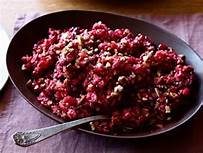Importance of well balance diet
All food contains all of the nutrients we need to be healthy, it is necessary to eat various foods in sufficient amounts. A good diet will include many different foods, and sufficient in quantity and quality to meet an individual’s need for food energy and other micro nutrients.
MILK AND DAIRY PRODUCTS
Typical serving size:
1 cup of milk (8 fl oz or 236 mL)HOW THEY HARM
High cholesterol Lactose intoleranceAllergies
AcneWHAT THEY HEAL
Bone loss Insulin resistance Milk is a good source of dietary calcium, a mineral needed to build healthy bones and teeth and to maintain many of the basic functions of the human bodyThe milk sold in North American markets is also fortified with fat-soluble vitamin D, and homogenized for a smooth texture
Two to four servings a day of milk and other dairy foods are recommended
THE RAW MILK ISSUE The controversy surrounding raw milk continues to stir up debate
Enthusiasts claim that raw milk is fresher and tastier and that it cures certain ailments
However, unpasteurized milk may contain disease-causing organisms from the cow, from its human handlers, or from the milking and processing equipment
In the pasteurization process, milk is heated hot enough and long enough to kill most microorganisms without compromising the taste or the nutritional content of the milk
The sale of unpasteurized milk is illegal in North America, and health regulatory bodies urge pregnant women and people with weakened immune systems to avoid raw-milk cheese
Widely available types of milk include regular whole milk (not less than 3
25% fat), low-fat and skim milk (with fat from 2% to less than 0
5%), and cultured buttermilk (less than 1% fat)
Another type of milk known as UHT (ultra-high temperature) is processed at high temperatures so that it can be stored without refrigeration for long periods
To make evaporated milk, 50 percent of the water is evaporated
Then, for condensed milk, sugar is added—up to 40 to 45%
Dry, or powdered milk, has had all the moisture removed
Flavored milk, such as strawberry and chocolate, has about 4 tsp or about 64 calories of added sugar per 8-oz carton
Cream, which is made from skimming off the butterfat from the top of milk, is dense with calories —a mere tablespoon has 25 calories
Other common dairy products include cheese, ice cream, and yogurt
Milk and dairy products in North America are almost always made from cow’s milk, but other types of milk have been gaining popularity
For example, goat’s milk can be used exactly like cow’s milk
It’s usually a little thicker and creamier in texture and can have a musky odor
It can be easier to digest and is a rich source of vitamin A and riboflavin
However, those with lactose
Allergies
may still be affected by goat’s milk, too60% of adults in the United States cannot digest lactose, the sugar in milk
Health Benefits
Helps support bone healthOne cup of milk contains about 300 mg of calcium
A diet rich in calcium can help prevent osteoporosis
Prevents insulin resistance
Two Harvard studies found that people who made dairy foods part of their daily diets were 21% less likely to develop insulin resistance and 9% less likely to develop type 2 diabetes
Health Risks
High blood cholesterolOne cup of whole milk contains 5 g of saturated fat, which is 25% of the Recommended Daily Intake (RDI) for saturated fat
A steady habit of drinking whole milk, in turn, can lead to high blood cholesterol
Lactose intolerance
Many North Americans have some degree of intolerance to milk because they lack the enzyme that is needed to digest milk sugar, called lactose
The alternative is lactose- reduced milk or even small amounts of regular milk
The body also digests the lactose in yogurt and cheese more easily than in milk
Allergies
Cow’s milk can cause reactions in children and should be kept out of the diet during the first year of life
Acne
Research suggests that consuming milk may increase the levels of pimple-producing hormones known as androgens in the body, which can lead to more outbreaks in both adults and teenagers
Allergies
Buying Tip
s
Storing Tips
Cardboard containers preserve their content better than clear plastic or glass bottles: Milk stored in bottles should be kept in the dark




